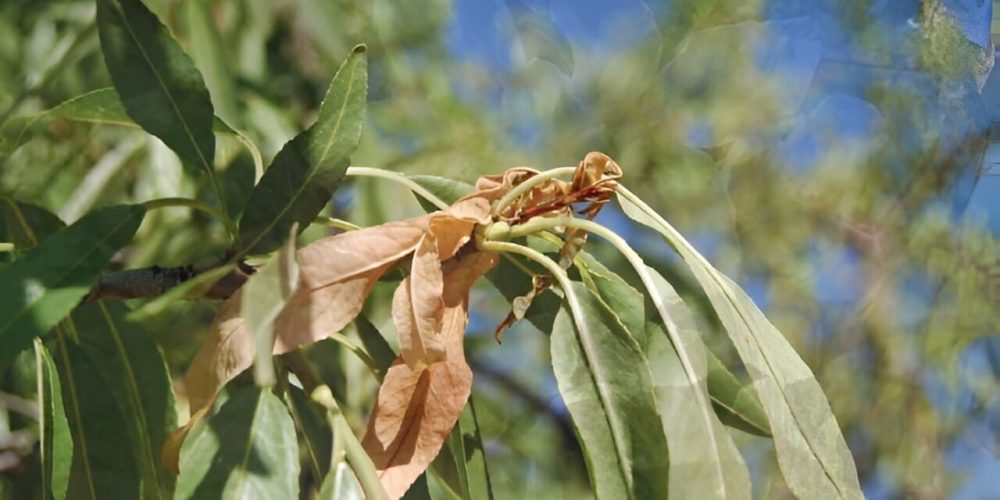Table of contents of the article
TogglePeach tree borer is a pest that causes damage to branches and affects the productivity of peach trees. This article from the “WORLD OF PLANTS” website explains how to deal with this pest and ways to prevent it.
Symptoms of peach twig disease
- Scientific name : Anarsia lineatella Zell
- the family : lepidoptera
- The appearance of perforated buds, and the infection is known from the dots of glue secreted from the site of the entry hole, the infected fruits fall, and when the fruit is opened, the feeding passage is seen directly around the kernel. This insect causes trenches inside the branches of newly growing almonds, which destroys young seedlings
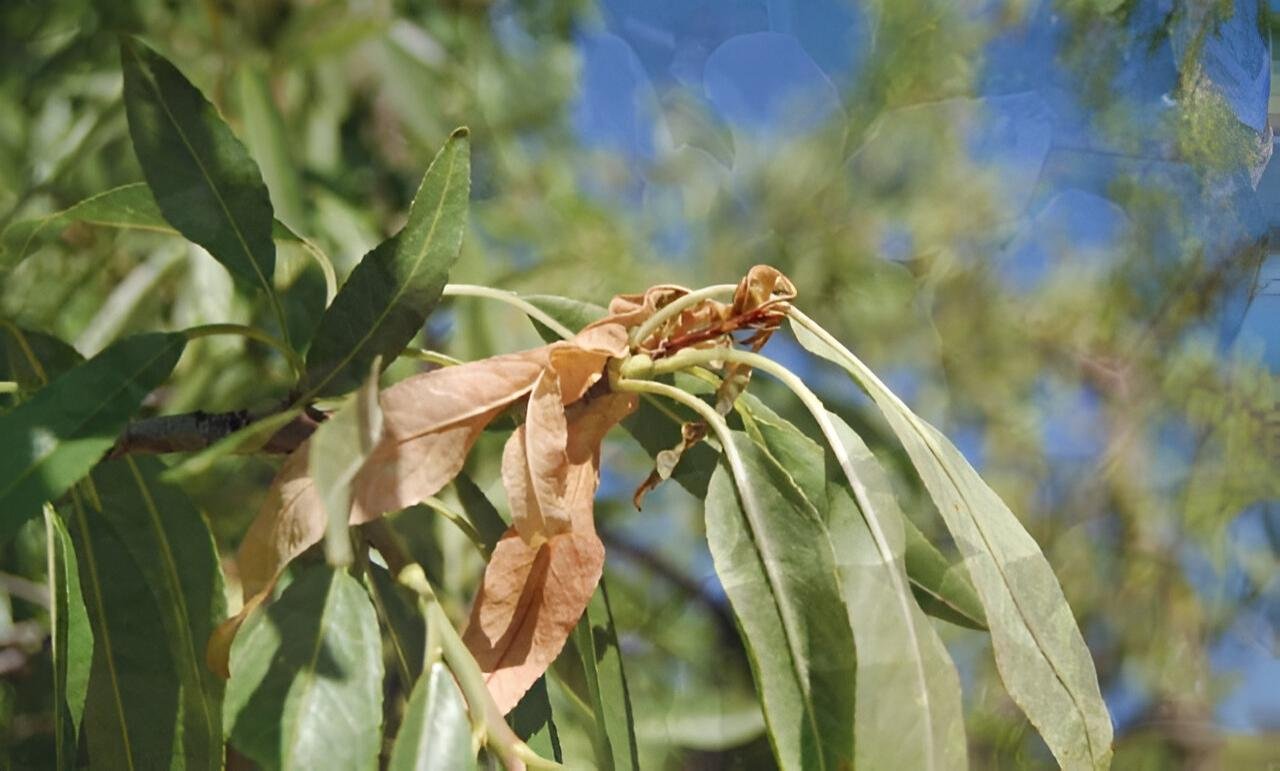

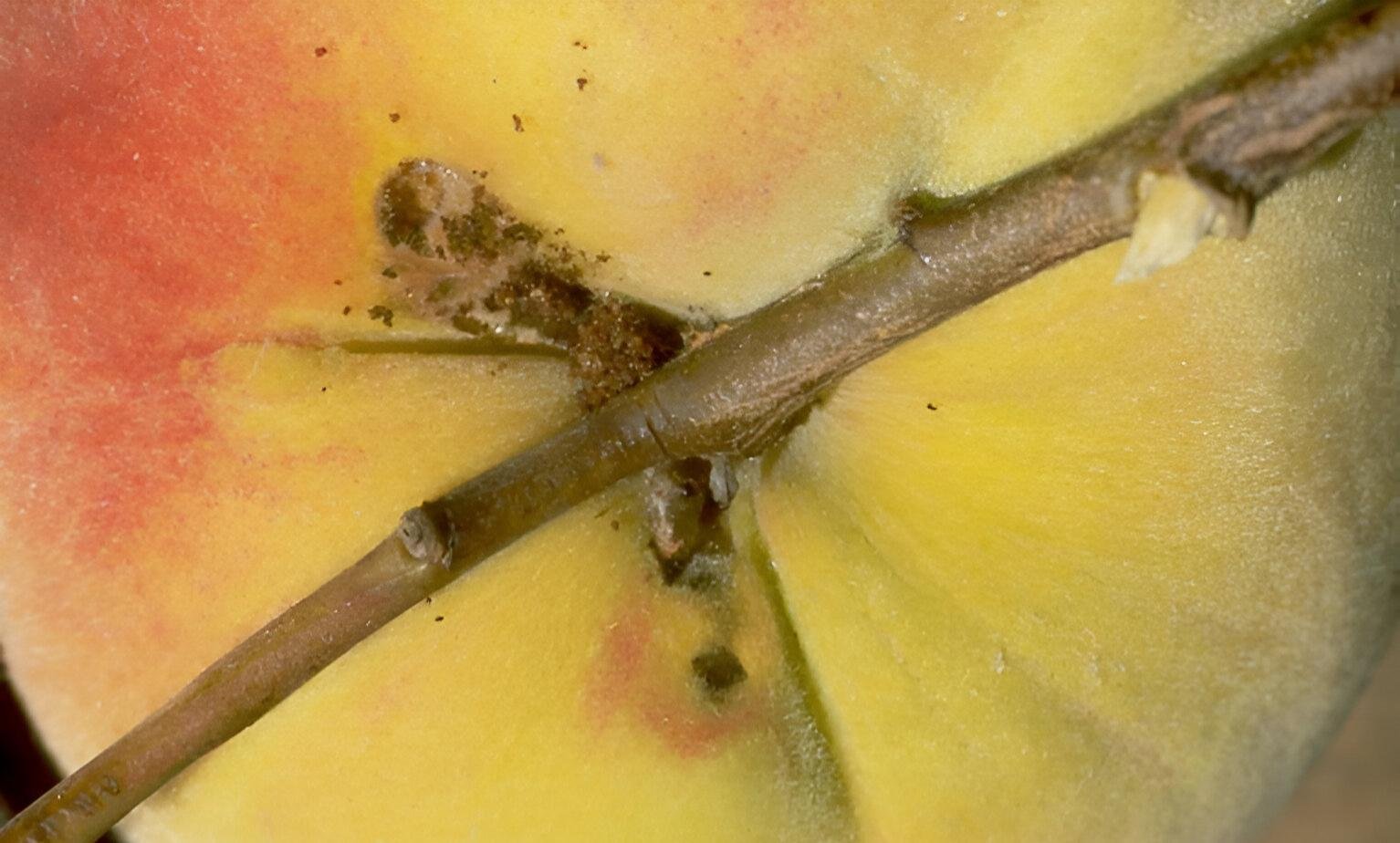
Description of an insect that bores peach branches
A small butterfly, 8 mm long. The color of the front wings is gray with light and dark lines. The back corner of the front wing is fringed. The back wings are white with a brown edge with long fringes. The antennae are of the long thread type, which the insect folds over the wings while resting.
- Caterpillar: 12 mm long, bright brown in color, with red spots where the rings connect
- The pupa of the chained type is reddish-brown in color.
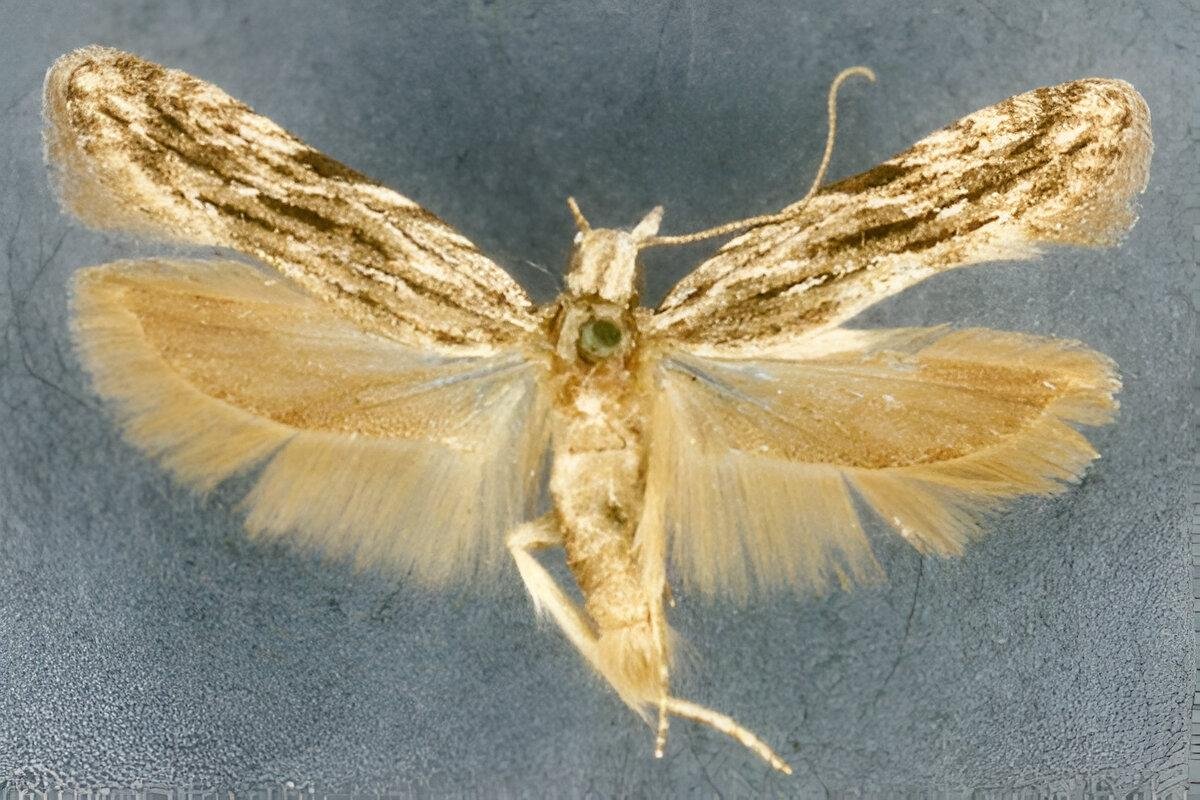
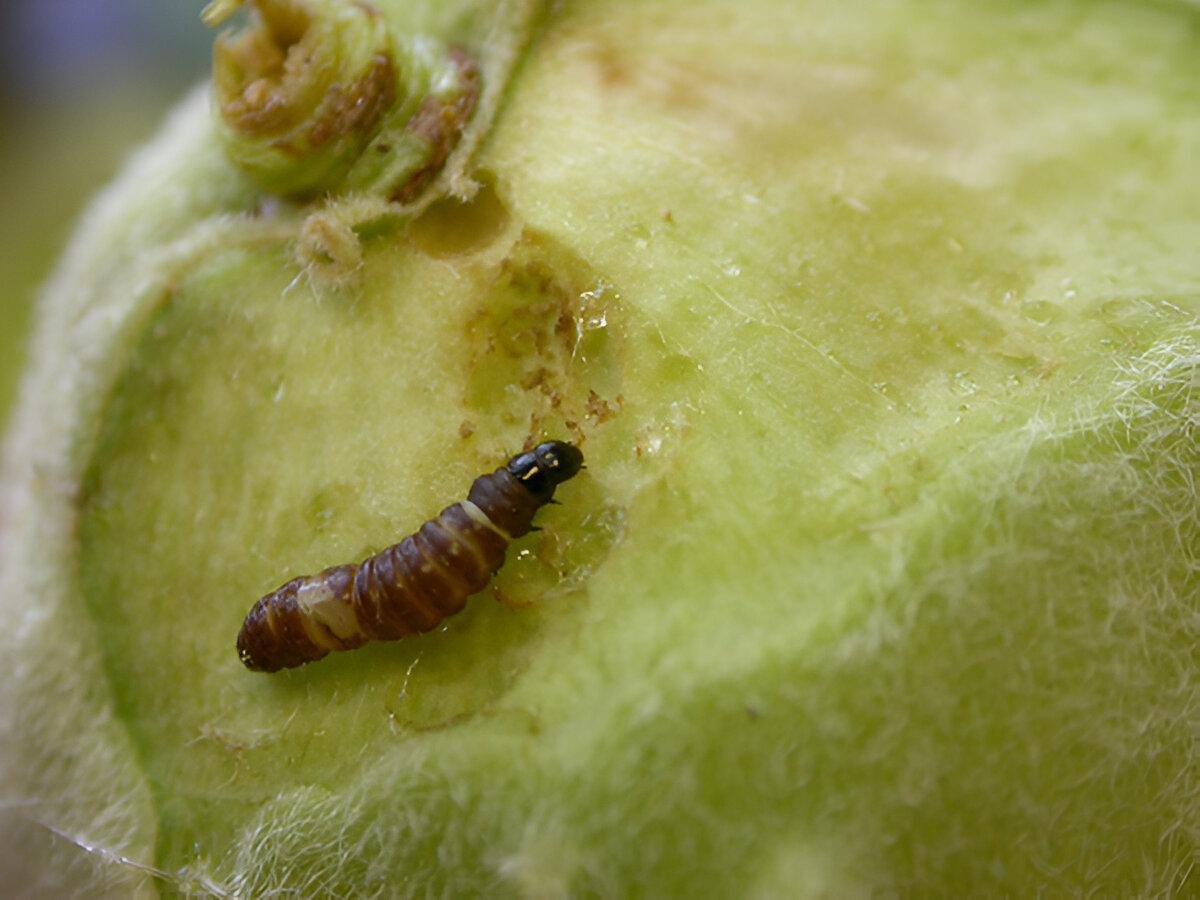
Causes piercing peach branches
- The distance between the orchards (crowding of plants) or planting vegetables between trees leads to the appearance of the pest.
- Climatic conditions (high temperature and high humidity)
- Increase soil moisture around plants.
- Use of seeds carrying the disease.
- Failure to sterilize the soil before planting.
- Causing wounds to seedlings in the nursery while spreading them.
- Not carrying out agricultural operations, such as pruning, balanced fertilization, and removing weeds and plant residues.
Suitable conditions for the spread of peach twig borers
- At low air temperatures (25.0-26.9 ° C) and extremely dry conditions (HTC 0.2).
Insightful development cycle of peach branches
- It has three generations per year (in May, from July to mid-August, and from the end of August to the following May, respectively)
- The larvae overwinter in thorns, scars, or natural irregularities in branches
- The duration of development varies greatly depending on temperature and also from year to year. Eggs are laid on leaves and small branches, and females lay 30-60 eggs each.
- The larvae pupate in June, and insects emerge from them in July.
- The third generation insects emerge in September, where their larvae lie during the winter to give first generation butterflies the following year.
Spreading losses pierce peach branches
- The larvae destroy young branches, developing shoots (especially young trees) and fruits at different stages of development depending on the season.
- Weakness of the plant.
- Young seedlings die when attacked forcefully.
- Also, this piercing pest may overlap with other non-insect pests, forcing the farmer to apply integrated pest management.
Peach tree borer control strategy
1. Preventive measures to prevent the occurrence of the disease
- Cut the nests in which the larvae are found and burn them.
- Collect the larvae by hand early in the morning and kill them.
- Soil tillage
2. Chemical and organic control recommendations
- Chemical control: Chemical control is best carried out using BHC gamma (lindane) or organophosphate against newly hatched larvae for the first two generations, usually in June or July; Choosing the appropriate application dates, which vary from year to year, is most important.
- Organic control: A larval parasite, Paralitomastix varicornis (Nees), has been found to cause up to 25% of A. lineatella mortality in late summer.
- Pheromone traps in late August and early September
In conclusion, we would like to note that we, at the world of plants website, offer you all the necessary services in the world of plants, we provide all farmers and those interested in plants with three main services::-
- Artificial intelligence consulting service to help you identify diseases that affect plants and how to deal with them.
- Blog about plants, plant diseases and care of various crops ... You are currently browsing one of her articles right now.
- An application that provides agricultural consultations to clients, as well as a service for imaging diseases and knowing their treatment for free – Click to download the Android version from Google Play Store، Click to download the IOS version from the Apple App Store.
References
- Gambaro, PI “Anarsia lineatella Zell.(Lepidoptera Gelechiidae) in the peach orchards of the Verona district.” Bollettino di Zoologia Agraria e di Bachicoltura 10.1 (1970): 121-132.
- Dickler, E. (1982). The distribution of the quarantine pests Anarsia lineatella Zell. And Grapholitha molesta Busck in the Federal Republic of Germany. Nachrichtenblatt des Deutschen Pflanzenschutzdienstes, 34(10), 145-152.
- KLECHKOVSKYI, Yu; YUDYTSKA, І. Biophenology peach twig borer (Anarsia lineatella Zell.) in the south of Ukraine. Quarantine and plant protection, 2021, 1: 10-14
- Anarsia lineatella Zell. (Lepidoptera Gelechiidae) – cabi digital library
- The distribution of the quarantine – cabidigitallibrary
- http://kr.ipp.gov.ua/index.php/journal/article/view/90
- Phenology and damage of Anarsia lineatella Zell. (Lepidoptera: Gelechiidae) in peach, apricot and nectarine orchards under semi-arid conditions – researchgate




